Affiliate disclosure: This post may contain affiliate links. Please see our Privacy Policy.
Linden trees are not only beautiful, but they’re also edible! Every part of the linden tree is delicious, and many parts are medicinal too.
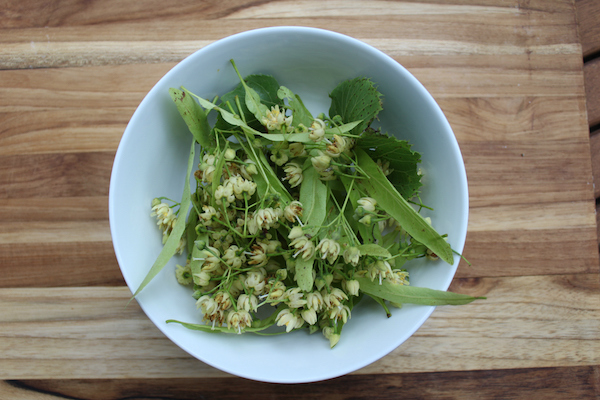
When I first started planning our edible food forest, I was adamant about including linden trees.
They seemed like the perfect all-purpose tree with edible and medicinal parts and an excellent food source for the bees. I sketched and planned and picked where our majestic linden would go on paper.
In the spring, we went out to walk the land and refine our plan.
Right at the edge of the woods, where I planned to plant our linden tree, I looked up to see a tree with absolutely huge leaves sprouting, and rugged bark. Wait a minute…we already have a linden. My eyes opened, and on our next woods walk, I saw dozens within a few hundred feet of the house.
Lesson learned.
Before you start thinking about changing your land and planting your permaculture paradise, take a thorough inventory. You might be surprised at how much diversity is already there…
Identifying Linden Trees
The Linden tree (Tilia sp.), also known as Basswood, Honey-Tree, Bee Tree or Lime Tree, is a common deciduous tree found throughout the northern hemisphere.
It’s easily identified by its utterly gigantic heart-shaped leaves (6-8 inches across) and intensely fragrant flowers. Adult trees have fissured bark and can reach 6 feet in diameter.
All parts of the plant are edible including the leaves, flowers, seeds, sap, and bark.
Range and Habitat
Tilia americana is found throughout the Northeastern and North Central United States from Minnesota to Missouri in the West to Maine and Virginia in the East. Other linden tree species are also found in this range, most notably little leaf linden which is commonly planted as a landscape tree (and has more fragrant flowers).

While it can be found as a young tree on roadsides, sand dunes, and dry exposed ridges, it tree seems to thrive on north and east-facing slopes with moist soils. Its preferred soil type is “mesic” meaning it maintains an abundant supply of moisture year-round without being swampy.
It’s not a dominant tree and generally shares the forest with Sugar Maple, Ironwood, White Ash, Red Maple, and Elm.
That happens to be the exact makeup of our 30 acres here in Central Vermont, and there are seemingly hundreds of linden trees dotting the woodland now that I know how to identify linden trees.
Linden Flowers
Linden Trees flower for two weeks sometime between May and July.
The actual flowering period depending on location and year to year weather conditions. At any given point during the two-week flowering period, a single tree will possess flowers at all stages of development hanging downward from leaf stalks.
Groupings range from 4 to 40 flowers in an inflorescence, and the larger groupings are particularly dramatic.
Trees begin flowering at about 15 years of age and continue throughout the life of the tree.
Since mature lindens are huge trees, it can be difficult to forage from adult specimens that have reached the canopy. Look for a tree that is at least 2 inches in diameter and watch carefully during the flowering season for bud formation if you want to harvest these tasty edible flowers.
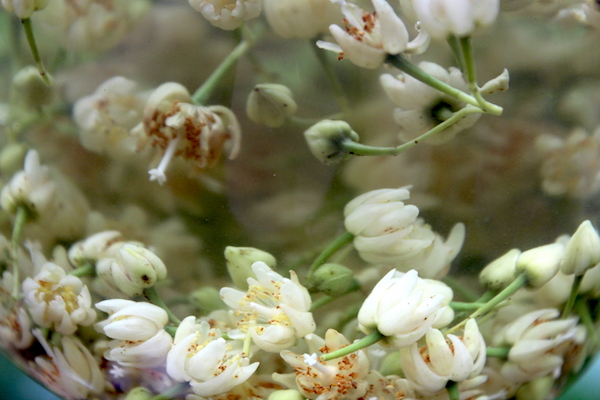
The best time to gather linden flowers is right after they open.
The flowers quickly fade, and they’ll only have peak fragrance (and taste) for just a few days. Since the flowers open over a two week period, you may need to make several trips back to the same tree for your linden flower harvest.
Linden flowers can be used fresh, provided they’re used immediately. They’ll only last about 24-48 hours after harvest, so it’s best to begin drying them immediately for storage.
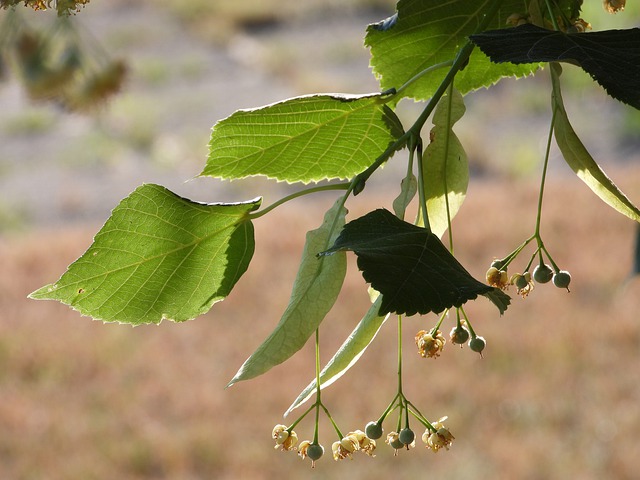
As with any flower, it’s best to dry them in a cool, dark well-ventilated space.
Avoid drying them in your oven, which will drive off much of their delicate flavor. Lay them out on screens and allow them to dry for a few days, ideally with a small fan to help with air circulation.
If you live in a particularly humid area, which happens to be most of a linden tree’s range…then it’s actually best to use a commercial dehydrator to ensure even drying to preserve linden flowers.
We use an Excaliber 9 Tray dehydrator which quickly and efficiently dries linden flowers. I add purpose-built silicone sheets to the drying trays, which helps support the tiny flowers through the drying process. Without the sheets, most of the flowers would fall through the racks during drying.
Set the dehydrator to the lowest temperature setting (usually around 100 to 110 degrees) and dry the linden flowers for 6 to 18 hours.
The total time will depend on the ambient humidity in your home, as well as the moisture levels in and on the flowers. (ie. Harvesting them with morning dew on them will mean a longer drying time).
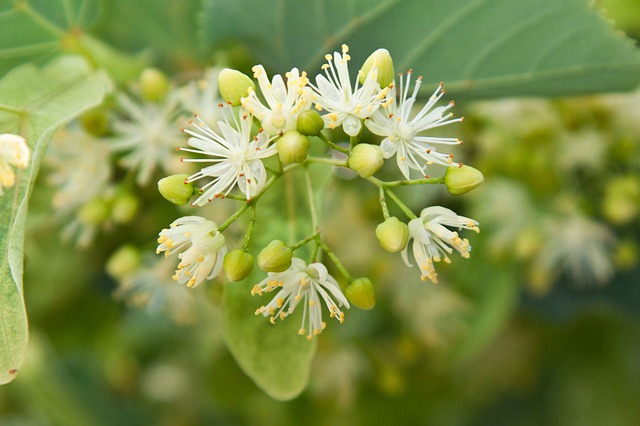
The flowers have a strong sweet smell, like honeysuckle or jasmine. They taste as floral as they smell, with the added flavor of a little sweet green asparagus. They can be eaten fresh or made into medicinal linden tea or tincture.
Medicinally, they’re most commonly used as a sedative and in the treatment of anxiety, similar to how chamomile is used today.
They’re also used in the treatment of colds and flus, as well as respiratory issues. The flowers are sedative, expectorant, diuretic, and antiseptic. (Source)
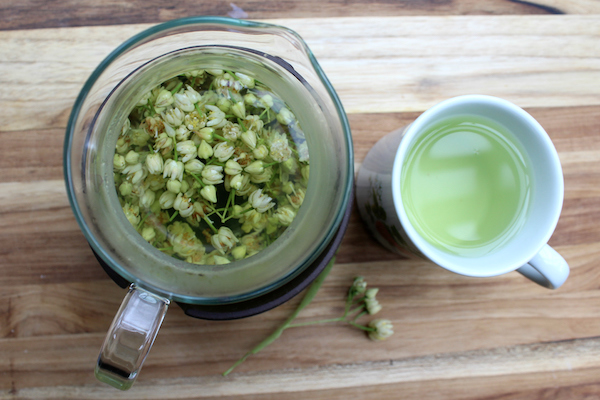
Linden Honey
Linden is sometimes called the “Honey-Tree” because it’s great for pollinators. Over 60 species of insects are known to routinely visit its flowers. Though linden trees only bloom for about 2 weeks a year, they’re a major nectar source for bees.
A single acre of mature linden trees can produce enough nectar to make over 1,000 pounds of honey.
Around these parts, the trees are often covered by both native bees and honey bees collecting the sweet linden nectar.
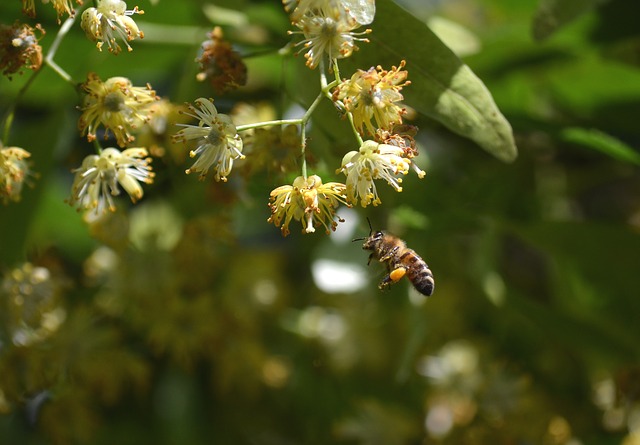
Linden honey itself is has a unique fresh woodsy taste, with a hint of mint and camphor. Though it’s light in color, it’s strongly flavored honey.
While it’s generally hard to obtain monofloral honey from any particular flower early summer, linden honey is an exception.
The blooms are so attractive during the two week period in early summer that beekeepers can actually pull off honey that is predominantly made with linden flowers if they time it correctly.
The result is pretty magic and unlike more generic wildflower or apple blossom honey that can be obtained just before and after the linden bloom. I happened to find a jar of linden honey locally, but you can also order it online here.
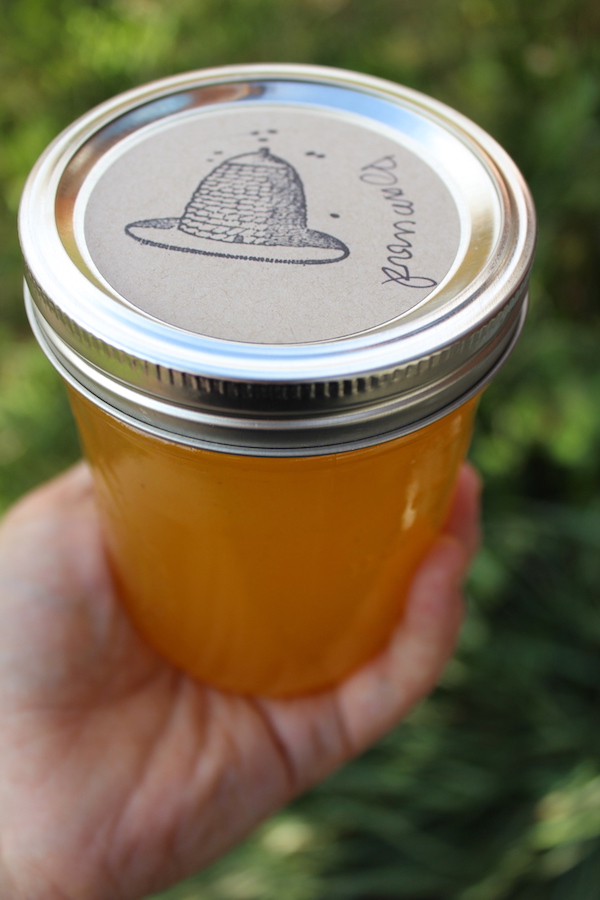
Linden Leaves
While linden flowers get all the attention, my favorite part of the linden tree is actually the leaves.
They’re a spectacular salad green, and unlike other wild greens usually harvested from edible weeds, they have no bitterness. Nothing but sweet, juicy salad from these, very similar to an expensive head of Boston butter lettuce.
Linden leaves are always edible but are best when picked young and before they have grown to full size. No bigger than 2 inches harvested in the early spring is ideal.
As they get older the texture changes and they get tough but are still quite tasty. Eat them fresh right off the tree, or use as a base for a salad.
They taste green and slightly sweet.
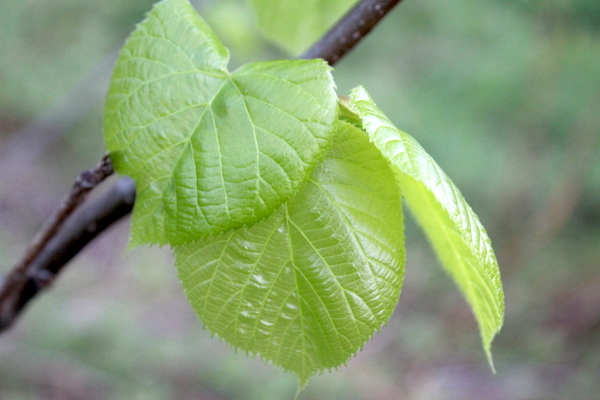
Even better than linden leaves are the tightly curled linden leaf buds.
If you catch linden just as it’s budding, but before the leaves unfurl, you’re in for a real treat. Linden leaf buds taste almost exactly like sugar snap peas. They are very sweet, and all that concentrated leaf matter rolled tightly into a bud has a pleasant sweet green crunch.
Since they’re so tasty and perfect for a pop in your mouth snack, it’s easy to overharvest linden leaf buds. Be careful, and remember that the growing tree will need most of these leaves to collect energy during the summer months.
Since linden trees usually get quite tall within a few years, most of the buds will be safely out of reach, but if you happen on a young tree, go ahead and harvest a small handful of these delicious linden treats.
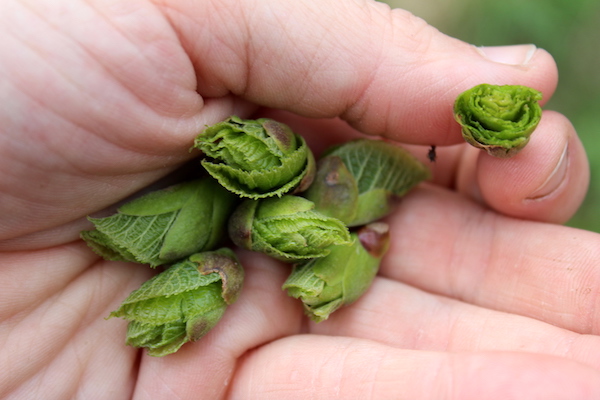
When the tree is young, it’s easily confused for a bush or shrub because it tends to grow in a bushy habit. Early on if it’s not competing for sunlight, young basswood trees will look a lot more like “bushes,” especially when they’re growing along roadsides.
These low growing “bush” linden trees are an excellent source of fresh greens.
Mature adult trees reach high into the canopy, but leaves are often accessible due to suckering at the base. Those small suckers are a great source of wild foraged greens, but they often don’t flower.

Linden Seeds
It’s said that linden seeds, which develop a few weeks after flowering, can be made into a convincing chocolate substitute. The seeds husks can be easily cracked between your teeth, and the seeds themselves are then ground into a chocolate-like substance. The ground paste, however, does not keep very long, making linden chocolate not viable on any large scale.
I’ve also read that you can crack linden seeds and extract a tiny edible nut from the inside.
I’ve tried both, and I’m sad to say I was unsuccessful. Though many sources say linden seeds are edible, I’ve yet to find a palatable way to eat them.
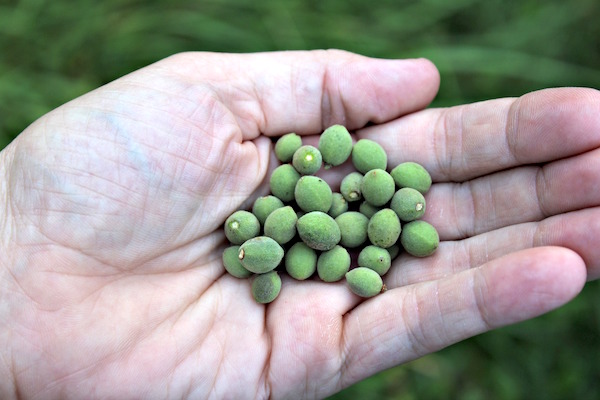
Sources say that only immature seeds, when mixed with the sweet-scented dried flowers, produce a chocolate substitute. When the seeds mature they lose some of their chocolate flavors, and gain a more coffee-like taste.
This may be limited to European linden species. I tried making linden chocolate out of the seeds of a Tilia Americana and it quite simply didn’t work. There’s nothing in those small, hard, bitter seeds that could be made into chocolate.
I couldn’t even get them to grind.
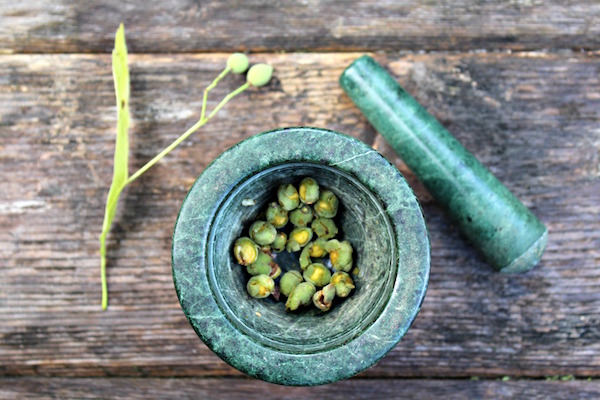
If you have access to European linden, give it a try and let me know how it goes.
Use this recipe for linden chocolate:
Mix 10-12 parts immature seed to 1 part dried flowers and process in a food processor or mortar and pestle. Add a little neutral oil (grapeseed, etc) to help you make it into a manageable paste. Eat immediately, as it loses its flavor within a day or two. (Source)
Use this recipe for Linden Coffee:
Roast mature seeds at 300 degrees F for 20 minutes until dry and browned. Grind when cool and make as you would coffee. (Source)

Linden Sap
Linden is part of a large group of hardwood trees you can tap for syrup.
The sap runs for a brief period in the early spring. While maple sap is roughly 3-5% sugar, linden sap is only roughly 1% and will take a lot more sap to make a gallon of syrup (~120 gallons instead of ~40 for maple). (Source)
We tried tapping linden trees for syrup, but sadly, we were unsuccessful. While we make syrup from maple trees as well as other species, including birch syrup and ironwood syrup, linden sap never seems to run.
I recently talked to the people that run New Leaf Tree Syrups here just down the road from us, and they tell me that many tree species require a vacuum pump to extract sap. They make a delicious butterscotch flavored syrup from beech trees, but the sap won’t run without a vacuum pump.
So while you can make syrup from the sap of linden trees, it doesn’t exactly naturally run like maple sap.
While linden sap is commonly mentioned as a “survival food” that provides both water and nutrients, it’s not very practical if it requires a vacuum system…

Still, while tapping linden trees may be impractical for the backyard sugar maker, they have another sugar-related use.
Basswood saplings were also traditionally used to make taps, as they can be easily hollowed out of pith to make a durable wooden tube to funnel the sap from the tree.
We’ve made our own maple taps using elderberry and staghorn sumac, but now I’m excited to try making basswood taps because I imagine they’d be considerably more durable.
We’ll see…
Linden Bark
The bark, or more specifically, inner cambium can be removed and eaten. It tastes slightly sweet and green like a cucumber. It can be eaten fresh as a vegetable, or dried and ground into powder for baking (mixed with flour).
Bark flour?!?! Don’t knock it until you’ve tried it!
We make pine bark flour and birch bark flour, and both are pretty delicious when used correctly.
Linden cambium is best taken in the early spring when its sugar content is the greatest. Harvesting from the trunk can hurt or kill a mature tree. It’s best to find a limb or sucker and cut it off completely, then peel back the outer bark to reach the sweet cambium.
Anytime you cut into the bark of a tree, you’re opening up the trunk of the tree to insects, disease, and decay. If you cut around the full circumference of the tree, a practice known as girdling, the supply of nutrients is completely cut off, and the tree will die.
According to the Herbal Academy’s online Botany and Wildcrafting Course, “As a rule, never harvest from the trunk of a living tree. Only harvest bark from a tree that has been recently cut down for some other reason or has recently fallen over on its own. The timing here can be tricky, as you only want to harvest from recently fallen trees (within a few weeks of falling or being cut down) and not those that have begun to rot and decay. Never, absolutely never, cut a tree down simply just to harvest its bark or its root bark. This is not only unethical, but unsustainable, and is the reason why so many tree species used in herbalism, such as slippery elm (Ulmus rubra), are currently at risk from over-harvesting.”
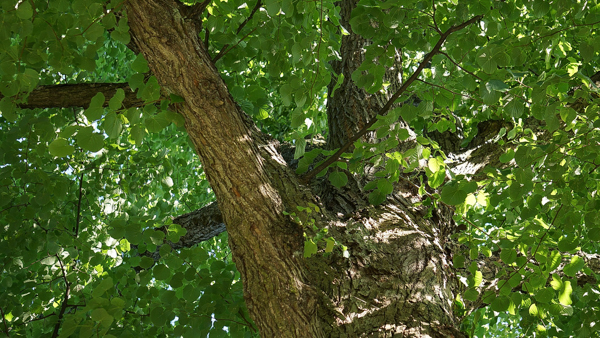
Other Uses For Linden
While the wood has a low BTU rating and makes poor firewood, it is prized for carving because it is very light and has little discernible grain. Charcoal made from basswood is said to be more absorbent of impurities than that of other woods, and it is used as a filter and in medicine for digestive complaints.
The cambium (inner bark) is used as cordage and was processed into clothing like linen by Native Americans. It is not quite as strong or durable as linen, but the tree produces vast quantities and the strands are very long, making it useful in quantity, if not quality.
Sources:
Backyard Medicine: Harvest and Make Your Own Herbal Remedies
Edible Wild Plants of Eastern North America
Foraging Guides
Looking for more foraging guides?
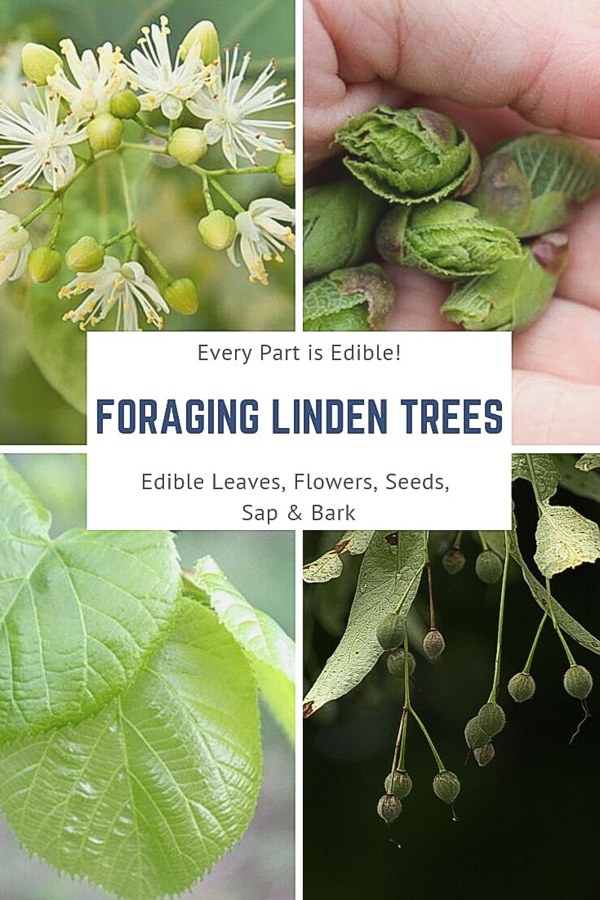
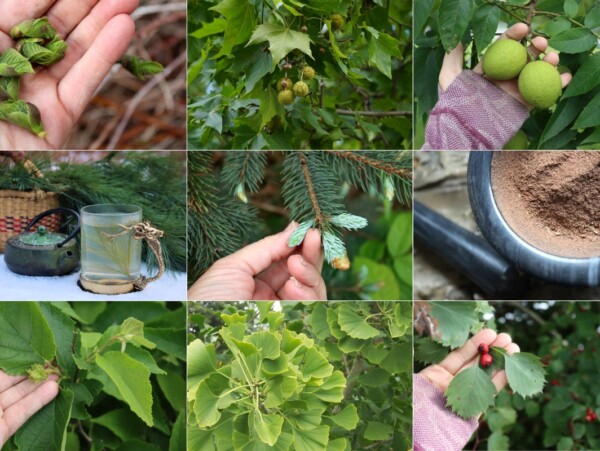
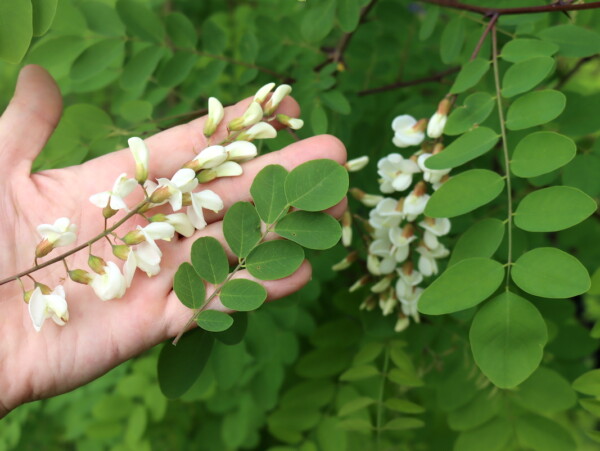

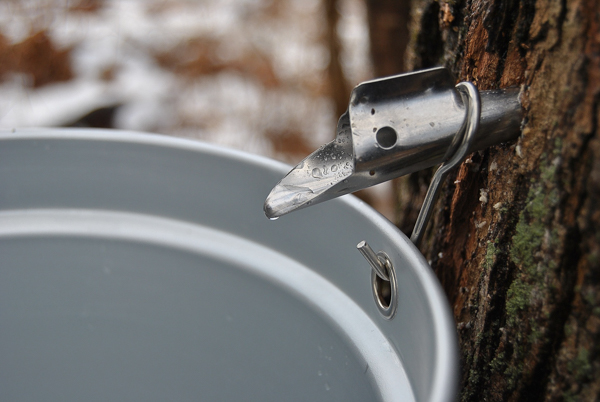










This was a super interesting read! Thank you! On the note of the seeds being like chocolate. I follow The Black Forager and she roasted her seeds before grinding them up in a coffee grinder. Then added some sugar and some oil.
We tried this yesterday and added it to milk (tho next time I’ll hold on the oil so it can mix better with the milk) and it was DELICIOUS!!!! It didn’t smell like chocolate but my husband said if he didn’t know, he would have just assumed it was hot chocolate.
I have found several linden trees in my neighborhood, but the berries (fruits?) are only about caper size, and in videos I’ve seen from @blackforager on Instagram, the fruits she was finding looked to be about the size of blueberries. Are there different varieties with different size fruits, or will the ones I’ve found get bigger over the season? I just don’t want to pick them early if they need more time to ripen/grow.
Thank you!
I’m just now seeing this. Did you end up harvesting any of the linden berries?
The pods of the linden trees around where I live in Maryland are quite small. Will they get bigger later in the month, or are they good to harvest now to try to make chocolate? Thanks!!
They aren’t very large and some say that as they mature they will lose some of their flavor so it’s best to harvest when immature.
What would it cost to ship some down there to Arkansas
Hi there!
I have a linden tree growing in my yard. Sadly, this year I have missed the full bloom by a few days. I’ve read that’s when you are supposed to pick the flowers. The tree has flowers on it still but they aren’t in full bloom, but still smell fragrant. Can I still pick the flowers and use them for tea? I was also thinking about selling dried flowers and leaves on my business website. Do people still sell dried linden flowers that are past the full bloom stage?
Thank you!
I would think that you could still get some benefit out of them if they are still fragrant. I personally would be hesitant to sell them as I would want to be sure that I was providing my customers with the best possible product.
Hello! Can I use linden seeds and great mallow in making capers?
I haven’t personally tried it but I don’t see why you couldn’t try it with any edible seed.